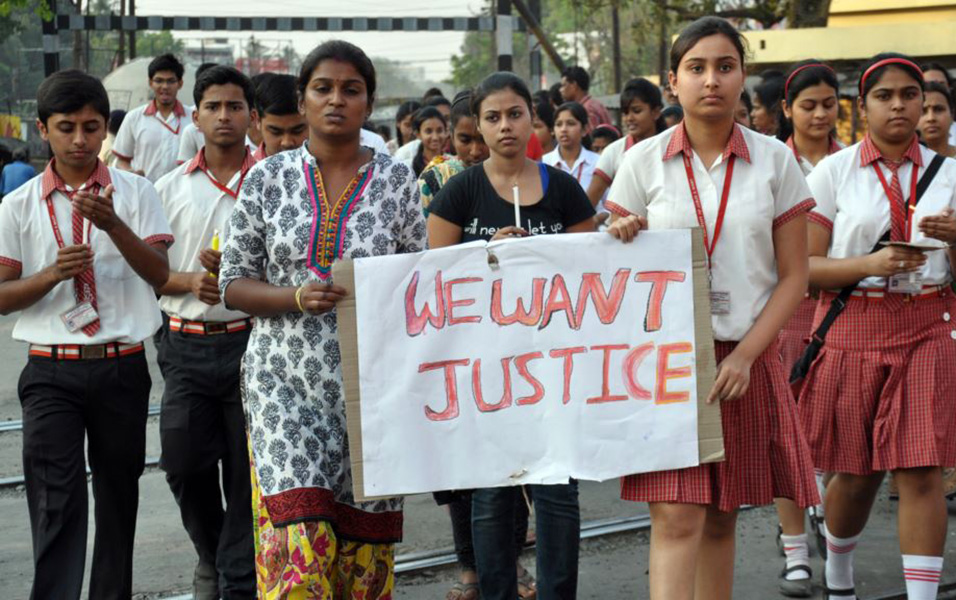As a practising lawyer and ardent admirer of the Indian judiciary, Sumant Batra believes it is the strongest institution in the subcontinent. But as times change and a young nation expects more and more, he writes, the third pillar must shift gears and convert itself into a modern institution.
The Indian judicial system has often faced criticism for being slow to deliver justice. Delays in the courts remain a grave concern for litigants. The lack of suitable infrastructure and an inadequate number of judges areamongst the main reasons for these delays. Archaic laws also act as speed-breakers in delivery of justice. For addressing these, the judiciary is dependant on the executive. Absence of adequate number of judges and supporting infrastructure can directly impact the speed and perhaps, the quality of justice. Undoubtedly, the courts must be provided with world-class infrastructure to discharge judicial responsibilities effectively.
Yet, the currentdiscussion over the judiciary is not just about delays or the need to strengthen its hard infrastructure. It is, in fact, about the necessity to introduce reforms in the soft infrastructure and to increasetransparency in the functioning of the institution, including in the matter of appointment of judges to both its lower and higher ranks. India is passing through a phase of rapid social, cultural and economic transition due to liberalisation, leading to significant changes in thecountry’s social, cultural and economic fabric and the people’s way of life. The institutions operating in the country, both public and private, are striving hard to adapt to and deal with the new dynamics. The executive too is struggling hard to keep pace with the rapid modernisation and growing expectations to perform. Transparency, good governance and performance are the buzz words these days. “Deliver or explain” is the mantra. A number of commendable reforms have been undertaken by the executive, though a lot more needs to be done. The political parties are also deliberating hard on urgent measures required to remain relevant and meaningful in this era of the impatient voter with high expectations on delivery.
The youth of the country seems to have similar expectations of the judiciary. Like in the case of the executive, it is not just about speed and quality anymore, but about the need for a change in the mindset and approach towards social, cultural and political issues. The judiciary has always maintained a certain level of seclusion from the rest of the institutions and stakeholders. Practices, procedures and conventions developed many years ago continue to form the basis for the functioning of the judiciary. These certainly held well in the past, but the judiciary should undertake a review to see how relevant they are today. The overall functioning of the institution, the methodology, approach and techniques of delivering justice of the past may need to change with time.
As the youth of India expects the Indian bureaucracy to break the shackles of the “Raj” and follow the principles of good governance, the judiciary is also expected to shift gears and convert itself into a modern institution that integrates comfortably with the other pillars of government. Sustaining its might and majesty, retaining the faith and confidence of the people and maintaining the status of “house of justice”, respected by one and all, winner or loser, shall be dependant not only on its independence, integrity and reputation but also speed, adaptability, quality and transparency. The judiciary needs to show greater tolerance to objective criticism of its decisions, both judicial and administrative, and increased transparency in its functioning. The process of appointment of judges and all administrative decisions should be open to scrutiny.
Unlike the past, judges now have to decide matters involving complex, technical and sophisticated commercial issues involving high stakes. New industries and laws are developing fast. The decisions of judges impact not only individuals and corporations but also the economy. Where high commercial stakes, sophisticated and technical disputes are involved, it is natural for litigants to expect speed and quality in justice. Litigants and lawyers are disappointed if there is any gap between their knowledge and that of the judges.
Similarly, the courts are being called upon to decide intricate and sensitive social and cultural issues, which are expected to be considered and determined by drawing a fine balance between their historical context and application in modern India. The institution needs to arrange continuing education, not only for the subordinate judiciary but also for those in the highest judiciary, so that judges at all levels are equipped to deal with such matters efficiently. Judicial academies must involve international and national experts from today’s generations in designing and imparting training. The judges should have greater interaction with society so that they are abreast with the developments happening around them. Judicial independence and staying aloof has no correlation in a modern society. More younger judges should be considered for appointment in the higher judiciary, including the Supreme Court.
The judiciary sits on a very high pedestal for the people of this country. Courtrooms are considered temples and judges demigods. As an institution, the judiciary remains tall and proud, in stature and reputation, independent and majestic, possessing impeccable integrity and continuing to sustain the faith and confidence of the people. Irrespective of criticism and stray incidents of corruption and controversies, the faith of India’s citizens (including me) in judiciary remains ironclad, which no sensational press headline, public or private debate can easily shake. History is evidence of the judiciary’s contribution in nation-building as an institution that has proudly lived up to the expectations of the citizenry. No doubt controversies and debates on judiciary have remained short-lived and died natural deaths.
But times are changing. India is a country with an immensely young population. The expectations of the youth are very high and their tolerance and patience, low. There is a need for urgent and greater introspection by judiciary. As the literacy rate grows, there is growing awareness of legal rights and better access to justice. Awareness leads to inquisitiveness. Being a great admirer of Indian judiciary, I am of the firm belief that the Indian judiciary is and shall remain the greatest institution of not just this country, but the sub-continent.


